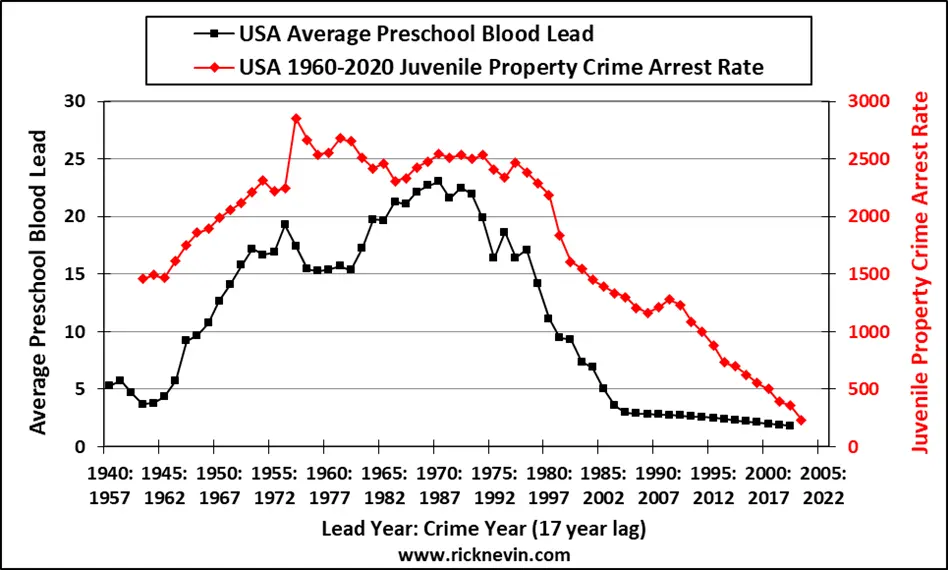Elephant in the room update: Juvenile crime plunged in 2020
Everyone loves a true crime mystery. Dateline NBC – “the OG of true crime” – is the most-watched newsmagazine on TV. With that fan base, you would think that NBC might want to follow up on the amazing true crime mystery investigated by Dick Mendel in 2014.
“For the juvenile justice field, there is no larger question. It’s the elephant in the room, the great mystery, the trend that has changed everything – and seemingly without explanation. Why have juvenile crime rates, once predicted to rise inexorably, instead been falling for two decades? Falling… and falling… and falling. What if the answer was readily available? What if it mostly boiled down to a single element, hiding in plain sight, and we just refused to notice?” (Mendel, 2014)
Mendel referred to the same element featured in the title of Kevin Drum’s 2013 Mother Jones cover story: “Lead: America’s Real Criminal Element”. The news media mostly just ignores Drum’s “Real Criminal Element” …and the elephant in the room.
But the elephant keeps getting harder to ignore. The juvenile crime decline has extended to three decades, and new data show that the decline accelerated in 2020.
The juvenile arrest rate for property crimes (burglary, motor vehicle theft, and other felony larceny-theft) fell 36% in 2020. That decline is about what we should have expected based on juvenile arrest rate trends since 1960, tracking earlier preschool blood lead trends.

Wright (2008) found that preschool blood lead above 5 mcg/dl is associated with a higher risk of violent and property crime arrests. The ongoing decline in juvenile arrests reflects earlier declines in the prevalence of preschool blood lead over 5 mcg/dl, and an associated decline in racial disparities in elevated blood lead.

The 2020 arrest data show a continuing decline in racial differences in juvenile property crime arrest rates. The Black juvenile property crime arrest rate fell 40% in 2020. From 1991-2020, the juvenile property crime arrest rate fell 91%.

The juvenile arrest rate for violent crimes (murder, robbery, and aggravated assault) fell 26% in 2020. The Black juvenile violent crime arrest rate fell 29%.
The juvenile violent crime arrest rate peaked in 1994. From 1994-2020, the juvenile violent crime arrest rate fell 80%.

The 2020 decline in juvenile crime is not a COVID pandemic effect. The violent crime arrest rate for adults ages 25 and older increased in 2020.
Mendel anticipated the ongoing juvenile crime decline in 2014:
| “… early childhood lead exposure has continued to decline steeply in recent years, meaning that youth entering adolescence over the next decade will have lower lead exposure than today’s adolescents. As a result, juvenile offending rates are likely to sustain their downward trend for the foreseeable future.” (Mendel, 2014) |
That statement is still true today. The oldest juveniles in 2020 were born in 2003-2004 when 5.3% of all preschool children and 16.4% of Black children had blood lead above 5 mcg/dl. By 2013-2014, just 0.5% of all preschool children and 1.6% of Black children had blood lead above 5 mcg/dl. This means we should expect another decade of juvenile crime declines. The only question is how low juvenile crime can go.
